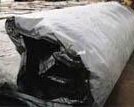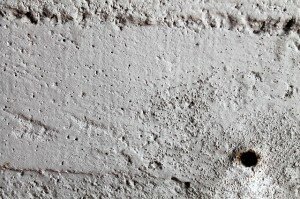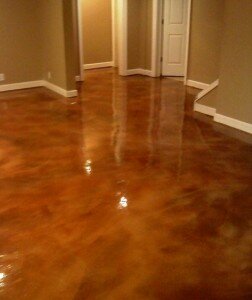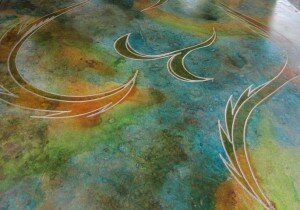What if in the sea of concrete sealants available on the market today, there was a new type of product that answered just about every operator’s wish list for achieving stunning looking concrete surfaces time after time? Too good to be true? What’s the catch? Let’s see what some of the claims that have been made about polyaspartic sealers:
What are the main Benefits of polyaspartics?
– Can be applied at any temperature (-30°F to 140°F).
– Bond to any concrete surface as long as it is prepped properly.
– Very low viscosity material can even seal small cracks due to its high flexibility.
– Produce a high film build with a single coat reaching 8 mils.
– Rapid curing to full strength (from 5 to 120 minutes depending on the formula used).
– No or Low VOCs (volatile organic compounds) because made with high solids content.
– Superior stain and corrosion resistance.
– Greater impact resistance than epoxy or urethane coating.
– UV stable means it will never turn yellow and is a UV protected layer to the underlying coats.
That’s a pretty impressive list by any account!
So what are polyaspartic sealers made with?
Basically a two-part a polymer coating material where a resin is mixed to a catalyst to create the curing reaction that hardens the material. It has been compared to epoxy and was first invented in the mid 1980’s by Texaco Chemical Company. The original formula has since been experimented and vastly improved with a myriad of variables.
What are they best used for?
Residential and commercial applications.
Indoor:
Garage floors, auto showrooms, warehouses because of their high resistance to stain, heavy traffic, abrasion and chemical corrosion. The fact that an entire garage floor can be completed in 5 hours (instead of 5 days for an epoxy floor) when using polyaspartic coating, makes it stand out from the competition. Quartz sands or vinyl flecks can even be added to the formula for a more decorative finish look. While the cost of material may be a little higher than epoxy, the time saving makes it a superior alternative.
Great for sealing concrete counter tops due to their ability to resist acidic materials like lemon, wine etc. (link to other article)
 Outdoor:
Outdoor:
Bridges – when embedded reinforced steel in bridges are sealed with polyaspartic coating, the structure is protected from the corrosion caused by fresh or sea water. All concrete piles of the 7-mile San Mateo/Hayward bridge in California received a 3-coat application of polyaspartic polymer during its construction, providing UV protection and deterring barnacles from clinging to the structure.
Limitations & risks
– Insufficient surface preparation can lead to disastrous results.
– Polyaspartics are impermeable so new floors should be cured for 28 days or more before applying sealer. If the substrate is contaminated or moisture is found on the surface, the coating will stick to it rather than the surface!
– Surfaces that have been cleaned with acid etching will not work because it lowers the pH and can cause delaminations problems.
– Potlife of some products can be less than 20 and as a result not adequate for large jobs.
– Product’s low tolerance for mis-application and poor installation practices.
– Not appropriate for floors with high moisture vapor emission rates.
– Fail to properly prepare will yield costly failures and rework.
CONCLUSION:
As for all new technologies, there is a phase of trial and error and a definite learning curve that are required. The most important thing to remember is that polyaspartic sealers are not for all jobs. The appeal in finishing a flooring surface in a day shouldn’t outweigh the other factors to consider. The two main causes of adhesion failure are the underlying surface has not been adequately prepared and when moisture is found on the surface. As long as you follow the manufacturer’s instructions, you should end up with a stunning results.
Examples of polyaspartic products:
InstaDrive from Kamcrete
Rapid 1000 from Rapid Coating Systems
Roll On Rock from Versatile Building Products
Have questions about concrete finishing, concrete pumps or accessories, give us a call at: (503)283-2105.![]()
Additional reading
Different types of polyurea
Polyaspartic floor coating uses
Buyer’s Guide to polyaspartics





